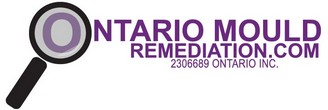How to remove mold from wood
The best way to remove mold from wood does not involve chemicals of any kind.The only way to effectively remove mold from wood is to physically remove the contaminated area. That is done with good old fashioned elbow grease. What I mean by elbow grease is simple… sand paper, a wire brush or completely remove the affected material all together by cutting it out.
Mold likes to bury itself deep into the pores of wood, drywall and other fibrous materials. Chemicals such as over the counter mold killer or bleach do not reach these “roots” and therefore do an inadequate job at removing the mold. To add injury to insult, you waste your time and hard earned money for nothing. When sanding or cutting away wood, it is a good idea to mask the surrounding area with plastic that can be thrown away easily (think Dexter). This way you can dispose of mold that was made airborne during the process and you will not contaminate other surfaces. The more you can mask off, the better.
Why cleaning products don’t work
Products like mold killer is the worst of all. It does not “remove” the mold but simply kills it when it can. Dead mold is just as harmful as live mold when it comes to causing adverse health effects. Most people think that once they kill the mold in their home, it is safe to clean up…..after-all the mold is dead. When cleaning mold, dead or alive, you often send dangerous mold spores into the air where they can then rest on other untreated surfaces or in your lungs, eyes and other body parts.
Another reason why mold cleaners and killing products do not work is human error. People simply do not read the instructions or follow them correctly. One good example of this is the dwell time required. Dwell time is the amount of time that a chemical is required to site directly on the mold for it to work properly. If there is a layer of dust between the mold and the chemical, the chemical can be less effective which then requires an increase in dwell time. You can begin to see why cleaning products and even household products do not make the grade.
Closing summary
Once again, remove the mold completely by sanding the wood with sand paper or a wire brush or by removing the wood completely and replacing it. When sanding, brushing or cutting wood that is contaminated with mold, always wear a breathing mask and disposable clothing that covers all exposed skin. Goggles are also recommended as well as something to cover your head.

